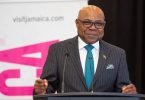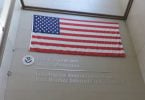It was Valentine’s Day 2007, but JetBlue was not feeling the love.
A nasty swirl of ice and snow pummeled the Northeast, forcing the airline to cancel more than 1,000 flights. On the runways of John F. Kennedy International Airport, hundreds of JetBlue passengers sat trapped on paralyzed planes, some for 10 hours.
“We know we failed,” JetBlue founder and CEO David Neeleman said after the storm. He apologized profusely and repeatedly. Months later, he was out of a job.
For the quirky, upstart airline that prided itself on its seat-back TVs and blue potato chips, the storm “was their bath of fire to join the real world,” said Michael Boyd, president of the Boyd Group aviation consulting firm.
Growing up meant new executives to overhaul operations, a customer bill of rights and a realization that canceling flights is bad but stranding travelers on tarmacs is worse.
“When Mother Nature is going to win, let her win,” current Chief Executive Dave Barger told shareholders last month.
Now with jet fuel prices skyrocketing and the airline industry in crisis, new challenges loom. To endure, JetBlue has a not-so-secret weapon.
Even after the wintry disaster, the J.D. Power and Associates 2007 airline satisfaction survey ranked JetBlue No. 1 by far for the third year in a row.
“The only reason they’ve survived the way they have is because people like them,” Boyd said.
“They don’t really have passengers so much as they have groupies that follow them around. That’s a heck of an achievement.”
JetBlue Airways took to the skies in 2000 with, as Neeleman described, “the promise of bringing humanity back to air travel.” The TVs, leather seats, new planes and low fares stood out.
The airline began with flights between New York and Fort Lauderdale, Fla. Eight years later, it serves 53 cities with 600 daily flights.
Now, in an industry that’s raising fares and slashing flights, JetBlue’s goals are to slow growth, find new revenue and steal customers, Barger said. “We’re not planning on the cost of oil moving down again.”
Citing costs, JetBlue last month pushed the delivery of 21 planes back five years and suspended plans to start service at Los Angeles International Airport.
The airline also has joined the new fee frenzy, charging for a second checked bag and offering more legroom for those willing to pay up to $20 extra.
So far, the changes haven’t tarnished JetBlue’s reputation, said David Stempler, president of the Air Travelers Association. He said his group receives many complaints about older airlines but fewer about JetBlue.
“I don’t think some of the things they’ve done have been at the level of irritation of other carriers,” he said.
JetBlue also faces the security restrictions and congestion problems at New York-area airports, which have the nation’s worst records for delays.
Another challenge is that JetBlue has only two aircraft models, seating 100 and 150 passengers, Boyd said. He said that limits the airports JetBlue can serve.
To make money with those planes, “you have to be in a market where there’s a lot of people three or four times a day,” he said. “New York to Florida, yup. But it gets thin once you start to fill up Florida.”
Inexpensive flights to Florida, a JetBlue strength, also could become casualties of a troubled economy as pinched consumers cut vacation travel, Boyd said. But, he said, economic woes would affect JetBlue last because of its loyal customers.
Another fan of Forest Hills, N.Y.-based JetBlue is the German airline Deutsche Lufthansa AG, which in January became JetBlue’s largest shareholder, paying a much-needed $300 million for a 19 percent stake.
Barger said the investment says a lot about “believing what JetBlue is all about.”
JETBLUE AT A GLANCE
> Strategy: Discount airline flying point-to-point routes.
> “Focus cities”: Boston; New York; Fort Lauderdale, Fla.; Orlando; Long Beach, Calif.; Oakland, Calif.; and Washington.
> Size: Eighth-largest passenger carrier in the United States based on revenue passenger miles.
> Destinations: More than 600 daily flights to 53 cities in 19 states, Puerto Rico, Mexico and the Caribbean.
> Aircraft: 107 Airbus A320s (about 150 seats) and 34 Embraer 190s (about 100 seats).
> Passenger revenue miles January-May 2008: 2.2 billion, up 5.6 percent from the same 2007 period.
> Percentage of seat-miles used January-May 2008: 78.7 percent, down from 81.8 percent in the same 2007 period.
ajc.com






















